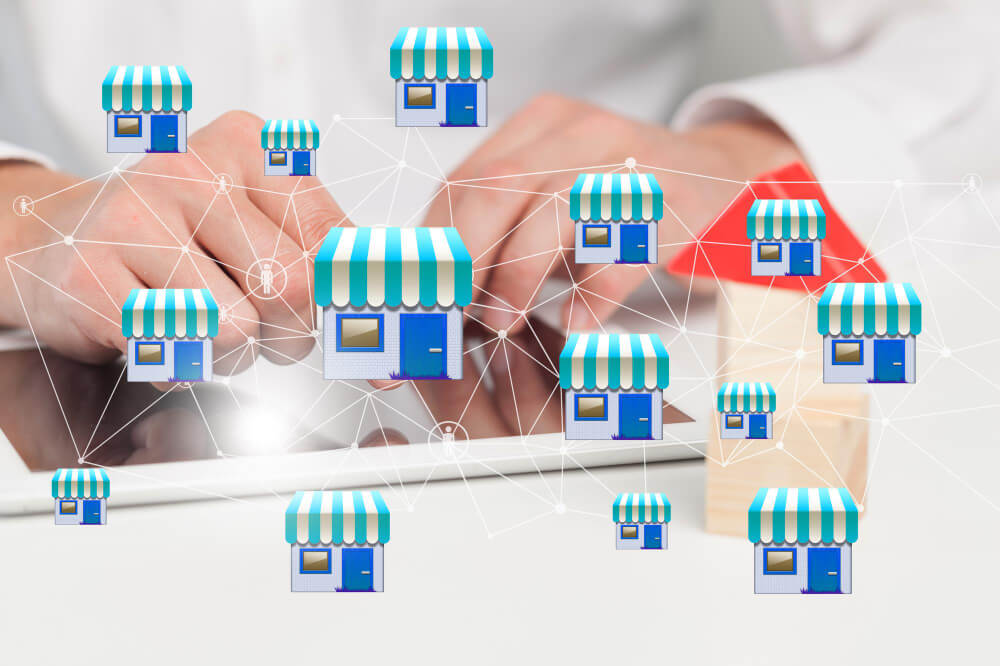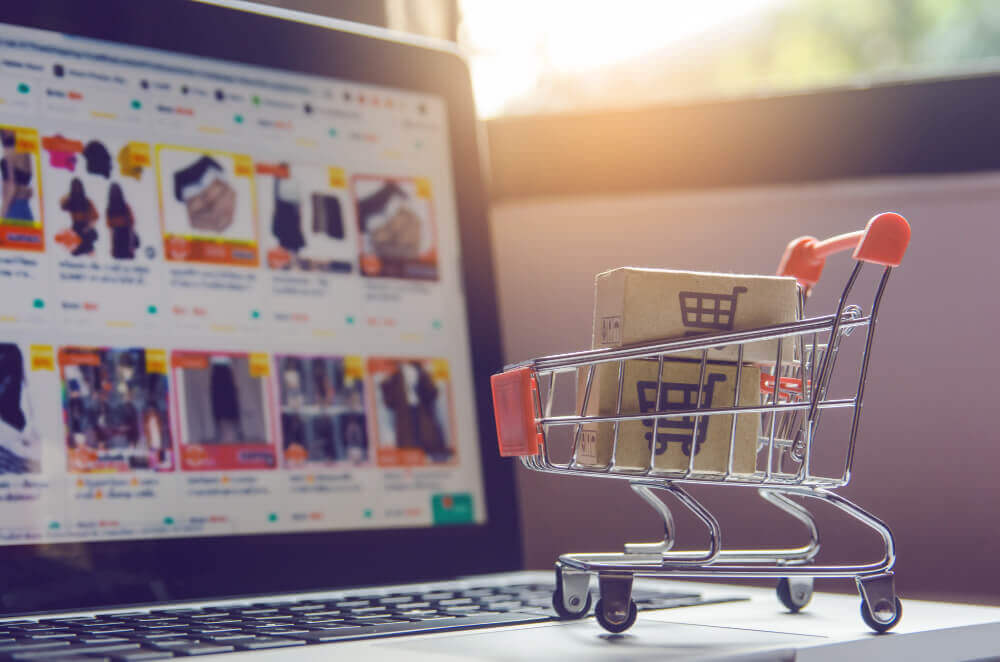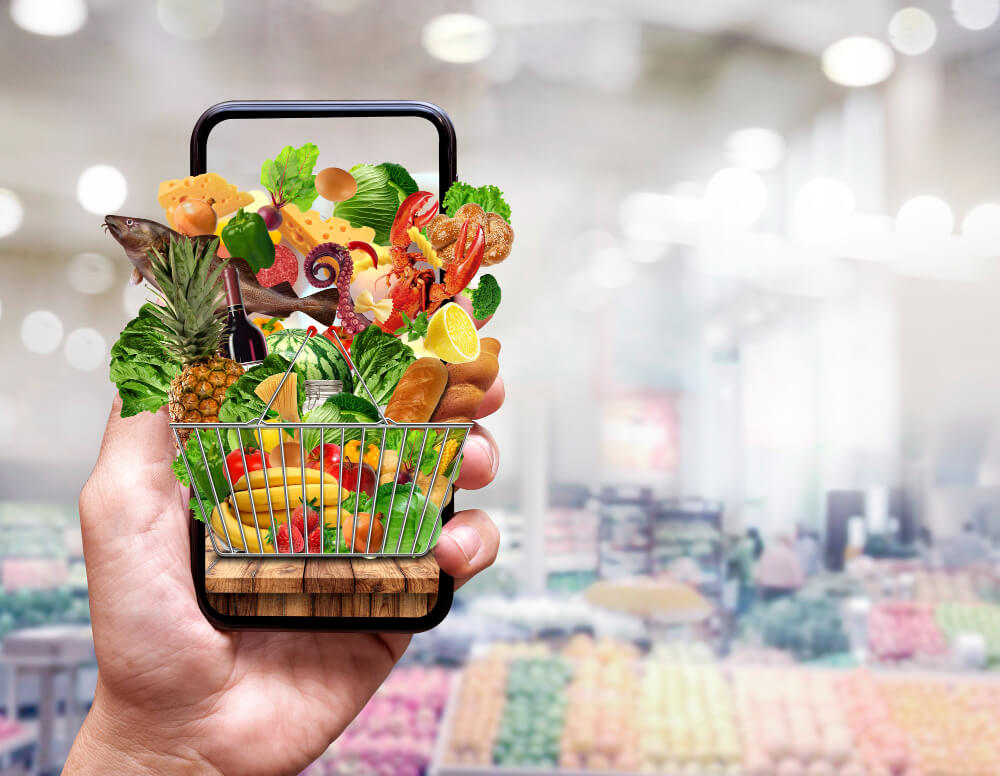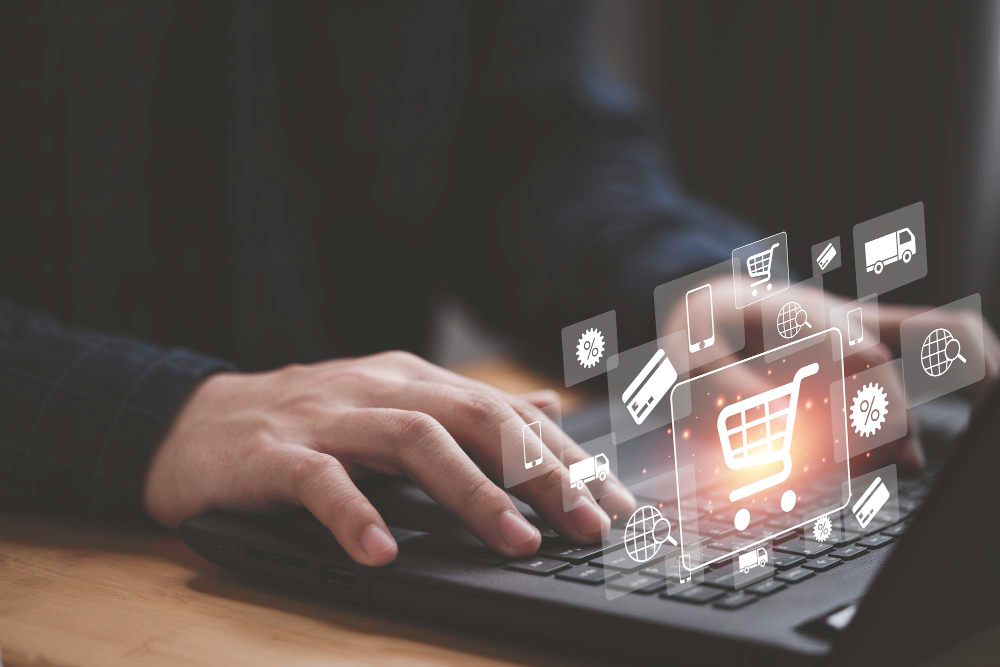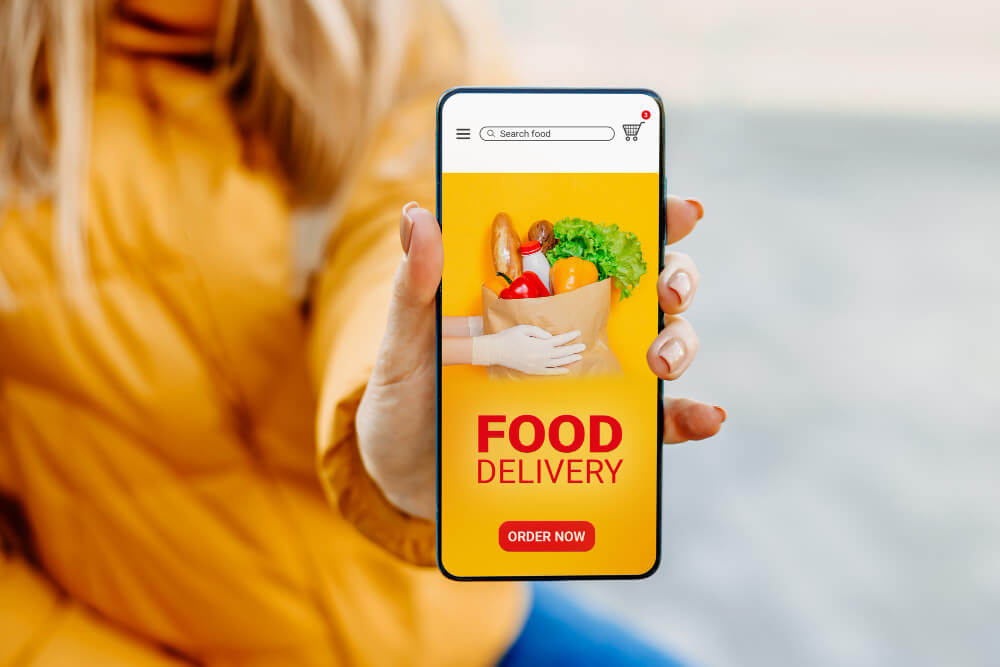Navigating VOD Platforms: Costs, Setup, and Business Insights
In a digital connectivity era, on-demand content consumption or Video On Demand (VOD) platforms have are dynamic means to satiate our ever-growing appetite for entertainment. These platforms revolutionize video experience and empower us to choose what, when and how to watch.

This article is an illuminating journey through the Video on Demand software realm and looks at its various intricacies along with financial factors, and the art of establishing a successful streaming business. As the digital landscape evolves, so too do the opportunities and challenges within the VOD space. Whether you’re a visionary entrepreneur seeking to carve a niche ,a curious consumer keen to fathom the mechanics, or just curious about Cost of VOD platform join us as we navigate the landscape of VOD platforms, uncovering insights that span from the technological underpinnings to the creative strategies that captivate audiences worldwide.
Index
Understanding VOD Platforms
What is VOD Streaming? How Does Video On Demand Software Work?
How Do I Start a Streaming Business? Two Approaches to VOD Platforms Setup: From Scratch Development vs. Using Existing Solutions
Video On Demand Software and Its Significance Introducing "Cosmind Cast": A Ready-to-Use VOD Solution Features and Functionalities of Video on Demand Software
Factors Influencing the cost of VOD platform Budget Allocation and Planning
Understanding VOD Platforms
1. What is VOD Streaming?
VOD streaming, or Video On Demand streaming, revolutionizes video content consumption by allowing users to watch videos at their convenience, freeing them from fixed schedules. It leverages remote servers and internet access on various devices to offer personalized viewing experiences, enabling pausing, rewinding, and replaying. This technology transcends traditional broadcasting limitations, granting a global audience access to diverse content. VOD streaming not only transforms how we engage with videos but also expands the horizons of storytelling and information sharing, empowering users to curate their own entertainment choices.
2. How Does Video On Demand Software Work?
Video On Demand (VOD) stores a video content library on servers. Users access video on demand via internet. When a user selects a video from the servers, he can stream it in real time on his device. VOD eliminates downloading and video saving need as the user can instantly access videos as needed. VOD platforms utilize content delivery networks (CDNs) to ensure smooth and efficient content distribution, enabling users to enjoy seamless playback and control over their viewing experience, including features like pausing, rewinding, and fast-forwarding.
Starting a Streaming Business
1. How Do I Start a Streaming Business ?
Starting a streaming business requires a strategic approach. Begin by defining your niche and target audience through market research. Acquire the necessary streaming equipment and software for content creation and distribution. Choose a business model – it can be subscription-based or ad-supported models. Develop an audience-focused content strategy.
Create a user-friendly platform by web development or featuring content on existing streaming platforms. Develop a content library, either through original productions or licensing agreements with content creators. Implement monetization strategies, such as subscription plans, pay-per-view options, or advertising partnerships.
Focus on marketing and promotion to attract viewers, using social media, online advertising, and collaborations to expand your reach. Invest in high-quality content and user experience to retain viewers and build a loyal audience. Continuously analyze data and user feedback to improve your offerings and adapt to changing trends. Assemble a dedicated team to manage operations, content creation, marketing, and customer support. With careful planning and execution, you can launch a successful streaming business and carve a niche in the competitive digital landscape.
2. Two Approaches to VOD Platforms Setup: From Scratch Development vs. Using Existing Solutions
When embarking on the journey of setting up a VOD platform, you’ll encounter a pivotal fork in the road, presenting two distinct approaches: the path of crafting a platform from scratch and the route of leveraging existing solutions. Building a VOD platform from the ground up provides an unparalleled canvas for customization. This avenue empowers you to meticulously shape every facet of the platform, tailoring it to your unique vision and specific requirements. However, this option demands a substantial investment of technical expertise, time, and resources. It involves conceptualizing and architecting the platform’s structure, coding functionalities from the ground up, and ensuring a seamless and engaging user experience.
Conversely, embracing existing solutions like “Cosmind Cast” offers an expedited trajectory to realizing your VOD platform dreams. These solutions come equipped with pre-designed frameworks that encompass fundamental features such as video uploading, user management, and payment gateways. While customization might be more limited compared to a bespoke platform, the advantage lies in significantly reducing the development timeline and complexity. This path is particularly attractive if speed to market and operational efficiency are high priorities, especially when resources for extensive development might be constrained. In the dynamic landscape of VOD platforms, choosing between these two approaches hinges on aligning your goals, resources, and timeline with the level of customization and time investment that best suits your aspirations
Need a customized technological solution? Our expert team is ready to assist. Get in touch with us today
Exploring Video on Demand Software Solutions
1. Video On Demand Software and Its Significance
Video On Demand (VOD) software stands as the digital architect behind the seamless and dynamic experience of on-demand content consumption. This specialized software stores video, facilitates streaming, and delivers a range of videos to audiences worldwide – basically, it creates the backbone of VOD platforms. The video on demand software transforms user engagement with video content and transcends the limitations of traditional broadcasting schedules. Thus, it offers viewers the power to choose what and when to watch.
VOD software empowers content creators and providers by simplifying the complex process of managing vast libraries of videos. It encompasses features such as content categorization, user authentication, and viewer analytics, fostering efficient content organization and personalized viewer experiences. Furthermore, it enables subscription model implementation, pay-per-view options, and advertising integrations to ensure monetization. Thus, it creates flexible revenue streams for businesses. VOD software remains at the forefront of reshaping content consumption, catering to diverse audiences, and allowing businesses to thrive in the ever-evolving world of digital entertainment.
2. Introducing "Cosmind Cast": A Ready-to-Use VOD Solution
In the fast-paced landscape of Video On Demand (VOD) platforms, “Cosmind Cast” emerges as a game-changing solution, catering to the aspirations of entrepreneurs and content creators alike. Designed to bridge the gap between ideation and execution, “Cosmind Cast” offers a pre-packaged VOD platform that combines the convenience of swift implementation with the freedom to shape your platform according to your unique vision. With an array of features encompassing content management, user engagement, and monetization, this solution serves as a comprehensive toolkit for launching your VOD venture.
What sets “Cosmind Cast” apart is its ability to empower individuals and businesses with varying expertise levels. From its user-friendly interface to its scalability to accommodate growth, “Cosmind Cast” democratizes the world of on-demand content, making it accessible to all. By removing the technical barriers, this solution liberates you to focus on the content you’re passionate about and the audience you aim to captivate. Whether you’re venturing into the realms of entertainment, education, or any niche in between, “Cosmind Cast” is your partner in navigating the complexities of VOD, ensuring a seamless journey from concept to reality.
3. Features and Functionalities of Video on Demand Software
A comprehensive suite of features and functionalities defining user experience and driving engagement are the heart of every thriving Video On Demand (VOD) platform. VOD software is like a powerful toolbox, offering content creators and administrators the means to effortlessly upload, organize, and manage an extensive array of video content. From categorization and tagging to metadata management, this software ensures that viewers can navigate and discover content intuitively. User authentication mechanisms safeguard premium content, granting access to subscribers and registered users while ensuring secure distribution
VOD software doesn’t stop at content management; it extends to revenue generation and audience engagement. Monetization tools, including subscription models, pay-per-view options, and advertising integration, empower platform owners to establish sustainable revenue streams. Advanced analytics provide valuable insights into viewer preferences, allowing content creators to tailor their offerings to match audience demand. Additionally, viewer-centric features like personalized playlists, content recommendations, and offline viewing capabilities heighten the user experience, fostering longer engagement sessions. From seamless streaming transcoding to interactive social sharing features, VOD software encapsulates the intricate blend of technology and user-centered design necessary for the success of modern on-demand content platforms.
The Cost of VOD Platform
Factors Influencing the Cost of VOD platform
Cost of VOD platform(Video On Demand) are influenced by a combination of factors, including the platform’s scope and complexity, the level of customization required for design and user experience, technical prerequisites such as server infrastructure and mobile app development, security measures like encryption and compliance, and the chosen development approach, whether building from scratch or utilizing existing solutions. Each of these considerations contributes to the overall financial investment necessary to create a functional and successful VOD platform that meets the unique requirements and aspirations of content creators and users alike.
4. Budget Allocation and Planning
When venturing into the development of a Video On Demand (VOD) platform, strategic budget allocation and meticulous planning are essential. This involves considering the costs of software development, which can vary depending on factors like platform complexity and customization. Additionally, it’s important to account for subscription fees associated with VOD software solutions, typically falling within the range of $50 to $500, depending on features. Allocating resources for technical infrastructure, mobile app development if applicable, robust security measures, marketing efforts, and legal considerations ensures a comprehensive approach to budgeting. By thoughtfully planning for each facet of platform development and operation, businesses and content creators can navigate the financial landscape and set the stage for a successful and sustainable VOD venture.
Conclusion
In conclusion, Video On Demand (VOD), driven by dynamic trends and shifting content consumption, is evolving. VOD platforms are becoming more tailored and engaging for users – thanks to increasing demand for personalized viewing experiences, interactive content, AI integration . The increasing demand for high-quality original content and the diversification of monetization strategies, including hybrid models and niche-focused platforms, are redefining the industry. Moreover, the convergence of VOD with emerging technologies like virtual reality and 5G connectivity promises to elevate the immersive and seamless streaming experience. As the VOD ecosystem expands and adapts to changing consumer behaviors and technological advancements, the future holds exciting possibilities for creators, businesses, and audiences alike.
Réservez dès maintenant une consultation gratuite pour discuter de votre projet de développement !
Why you should opt for a multi-vendor application for your business?
Active agency since 2014
Let's create an e-commerce Marketplace
Reactivity and customized support
Let's create an e-commerce Marketplace
Active agency since 2014

Reactivity and customized support
What we offer
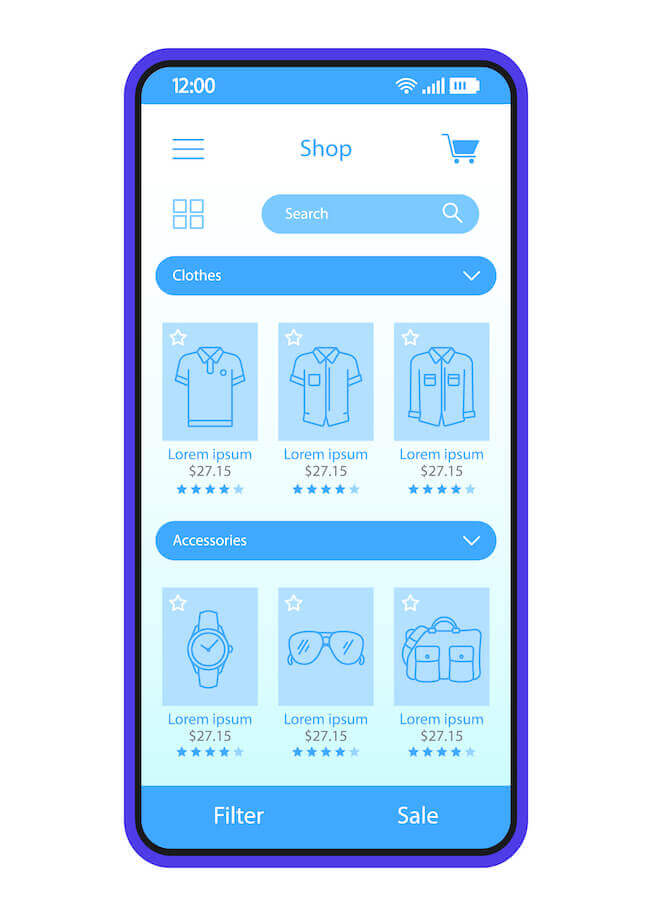
Mobile App
A mobile application is a key element to build a marketplace , as it allows users to access the platform at any time and from anywhere. At FlexiApps, we create for you a high-performance, user-friendly, secure, and feature-rich application.
Website
In order to build a marketplace a website is crucial , as it is the main point of contact between buyers and sellers. We create a website for you that offers clear information, easy navigation, and optimal security for online transactions.
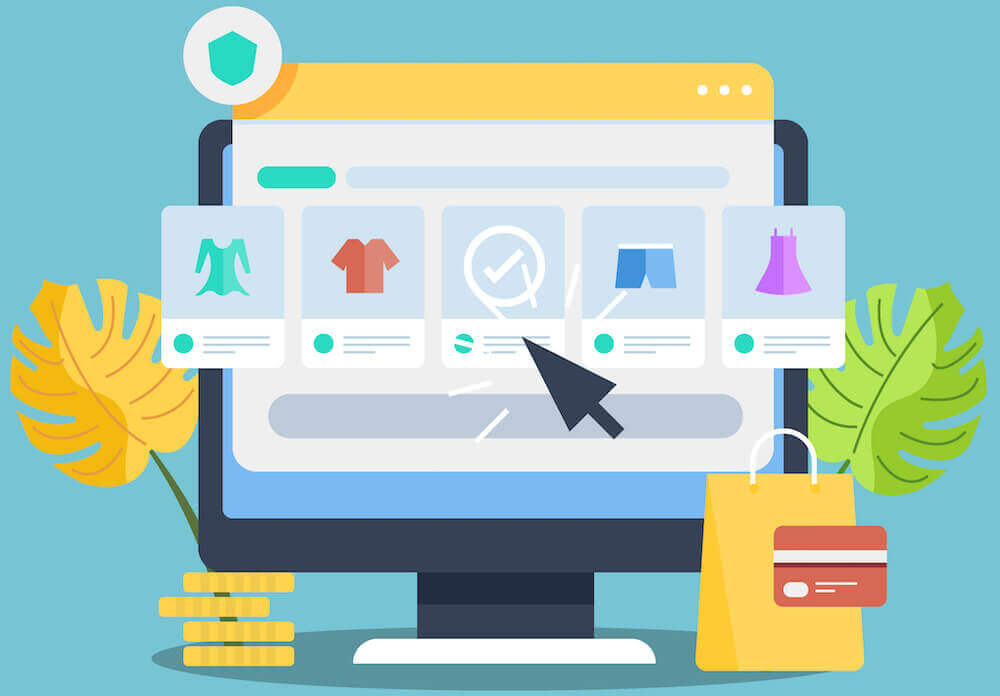
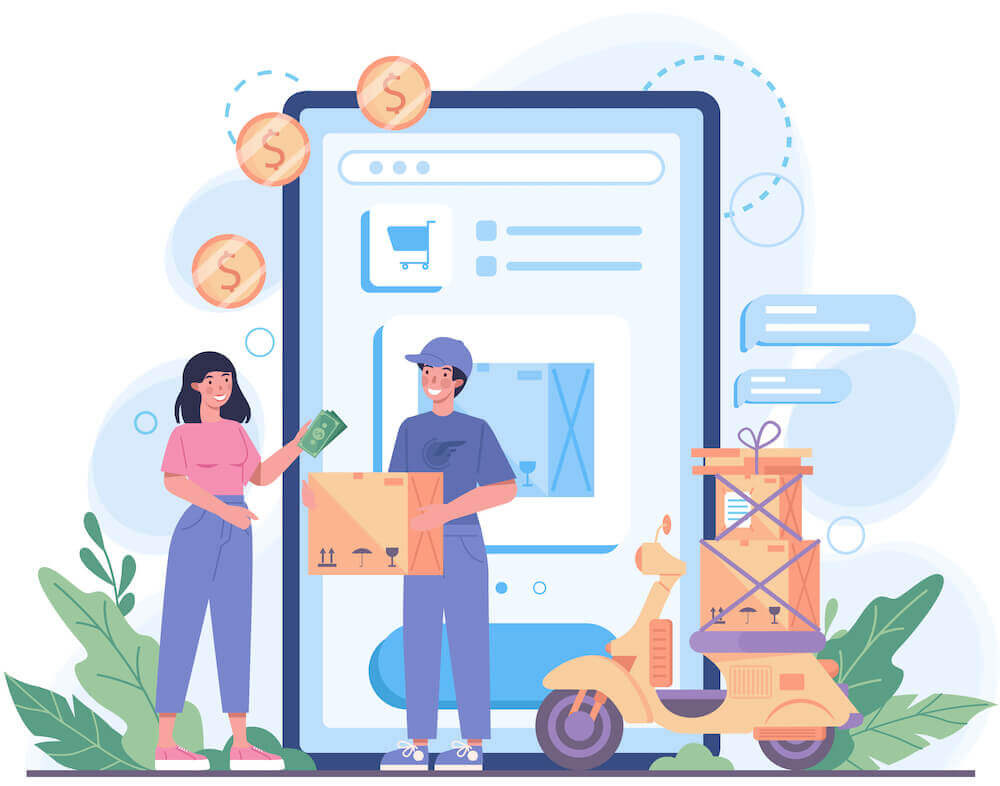
Delivery App
A delivery application is an effective solution for delivery, enabling users to track their order in real-time and interact with the delivery person. It sets businesses apart from their competitors and enhances their value. FlexiApps will create for you a strong, reliable, and convenient delivery app.
Admin Panel
In order to build a marketplace , An admin panel s important for the daily management . We develop an admin panel that enables monitoring of transactions and management of users and products. It may include reporting tools, dashboards, and real-time notifications
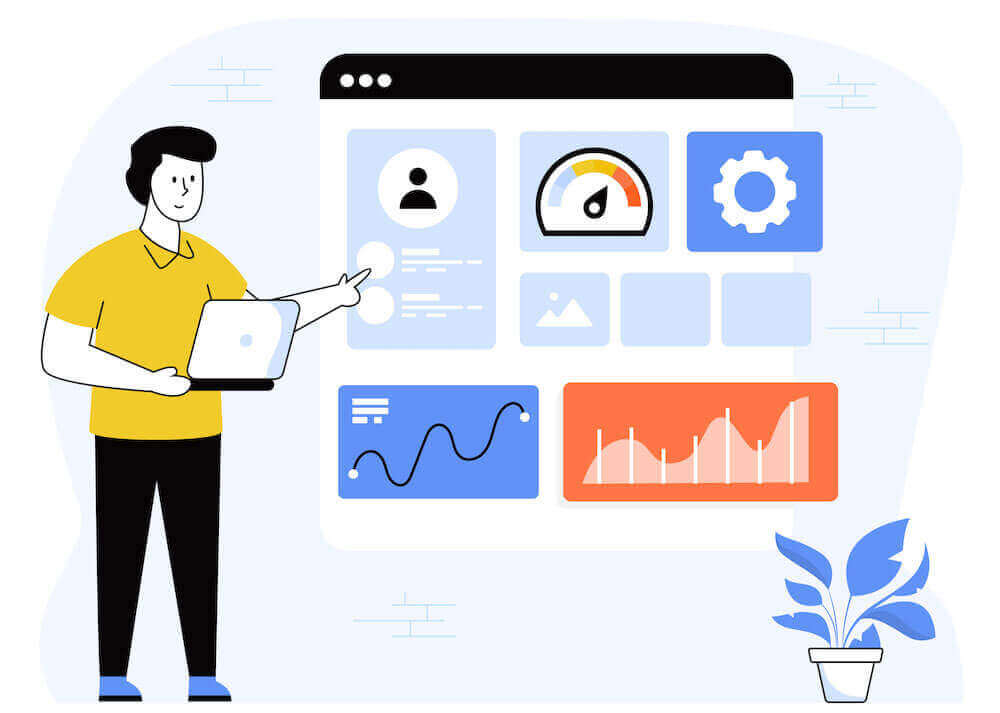
What we offer
Mobile App

A mobile application is a key element to build a marketplace , as it allows users to access the platform at any time and from anywhere. At FlexiApps, we create for you a high-performance, user-friendly, secure, and feature-rich application.
Website

In order to build a marketplace a website is crucial , as it is the main point of contact between buyers and sellers. We create a website for you that offers clear information, easy navigation, and optimal security for online transactions.
Delivery App

A delivery application is an effective solution for delivery, enabling users to track their order in real-time and interact with the delivery person. It sets businesses apart from their competitors and enhances their value. FlexiApps will create for you a strong, reliable, and convenient delivery app.
Admin Panel

In order to build a marketplace , An admin panel s important for the daily management . We develop an admin panel that enables monitoring of transactions and management of users and products. It may include reporting tools, dashboards, and real-time notifications
Features
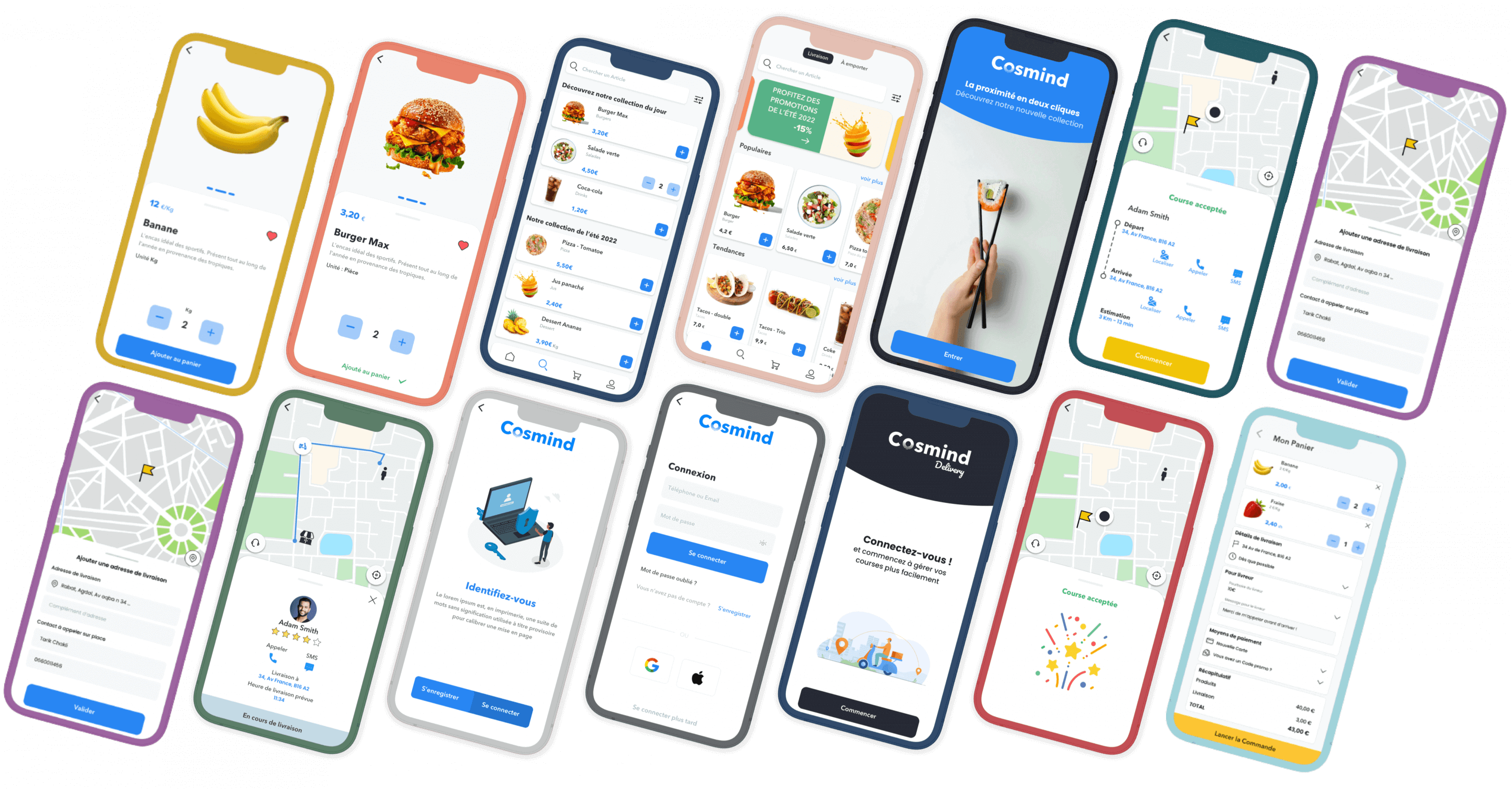
Why you should opt for a multi-vendor application for your business?
Starting a business in the e-commerce field comes with numerous technicalities and complexities. It’s not just about establishing your online business, but also managing orders, inventory, sales, logistics flow, and after-sales service
Most e-commerce businesses also rely directly on sales and marketing levels, and in this sense, it is crucial to sell through multiple channels to stay ahead of the competition.
More specifically, one of these channels involves the multi-vendor application. Multi-vendor channels have a significant impact on increasing your sales in today’s competitive market.
In this article, we will briefly explore what a multi-vendor channel is and then delve into the various advantages that creating a multi-vendor application can bring to your business
What is a multi-vendor channel?
It is a common platform that allows different business owners to come and sell their products. Among the most well-known examples of multi-vendor platforms and multi-vendor applications, one can simply think of UberEats, Etsy, or Alibaba
Why use a multi-vendor sales channel?
In the e-commerce market, online store owners increasingly prefer to sell their products on marketplaces. Today, more than ever, these business owners opt for this method to reach more customers and increase their sales. Additionally, it’s a solution that allows many businesses to strengthen their relationships with other sellers and reach even more customers and consumers.
Now, let’s take a look at the major advantages offered by a marketplace and the project of creating a multi-vendor application or multi-supplier apps
Create a multivendor application for access to a wider range of products.
The multi-vendor marketplace welcomes and brings together several sellers, which allows for a tremendous variety of products under one roof. As a result, businesses can attract more customers and significantly increase their sales.
Moreover, the ease of purchase and the vast selection of products explain why customers keep coming back to your platform to discover and buy more. Lastly, creating a multi-vendor application is also synonymous with better customer service
create a multivendor Application for easy inventory management
By choosing to create a multi-vendor application, inventory management becomes very easy for e-commerce businesses, especially those starting out.
When you opt for a multi-supplier marketplace, a significant portion of the tasks related to inventory management is reduced. In fact, sellers can lower their inventory costs by using a shared management system. This allows them to focus more on customer service rather than worrying about stocks
Create a multivendor Application to reduce operating costs
From the moment you open or use a multi-vendor marketplace, you no longer have to worry about logistics or product design. The sellers take care of everything. Your main role will be to assist them in reaching more customers and provide them with marketing tools to boost their growth
A multi-vendor application to benefit from significant web traffic
Multi-vendor marketplaces often have incredibly high web traffic, which enables sellers to sell their products more effectively and reach a larger number of consumers.
For instance, when a new e-commerce business or store goes online and utilizes a multi-vendor application, it immediately benefits from numerous online visitors, something that would be challenging to achieve with a traditional online store
How to explain the current enthusiasm for multi-vendor applications?
The interest in multi-vendor applications is quite new, and an increasing number of e-commerce investors are turning to this highly profitable and lucrative solution to grow their capital.
For multi-vendor marketplace owners, as you have just read, the advantages are enormous. However, from the consumers’ perspective, the appeal of a multi-vendor application is also a highly desirable feature.
Indeed, for customers, creating a multi-vendor application means:
• Unlimited product choices;
• Competitive prices;
• Better assistance;
• Significant discounts;
• Simplified decision-making through reviews.
While the benefits of launching a multi-supplier online store are indeed real, creating such a store can be somewhat challenging (or even outright difficult) for someone who is not familiar with coding and development techniques
How to Create a multivendor Application or multi-supplier marketplace?
Creating a multi-vendor application is no longer as complex as it was a few years ago, but the services of a web agency are still essential. Nonetheless, it is possible to create one in the following ways:
- Building from scratch: Creating a multi-vendor application from scratch requires custom development. For this type of solution, you will need to engage a team of designers, developers, and analysts to build your platform.
This process is not only time-consuming but also quite expensive. It is not the best solution for starting a business.
- Using a SaaS marketplace: Creating a SaaS application or a white-label SaaS marketplace is undoubtedly the best strategy for a successful business launch. The investment is reasonable (with an economical monthly subscription), and you benefit from a team of developers to assist you or provide advice when needed.
Creating a multi-vendor application using SaaS also eliminates the need for you to find a hosting provider. The provider hosts the application and the marketplace directly in the cloud and takes care of deploying your multi-channel selling solution from start to finish. Once it is ready, you can log in to your multi-vendor application using your credentials and retain complete control over all the tools already installed!
For more technical details, we encourage you to contact our experts who will explain in detail the importance of creating a multi-vendor application for a successful business launch and long-term consolidation.
How to create e-commerce Marketplace
Active agency since 2014
Let's create an e-commerce Marketplace
Reactivity and customized support
Let's create an e-commerce Marketplace
Active agency since 2014

Reactivity and customized support
What we offer

Mobile App
A mobile application is a key element to build a marketplace , as it allows users to access the platform at any time and from anywhere. At FlexiApps, we create for you a high-performance, user-friendly, secure, and feature-rich application.
Website
In order to build a marketplace a website is crucial , as it is the main point of contact between buyers and sellers. We create a website for you that offers clear information, easy navigation, and optimal security for online transactions.


Delivery App
A delivery application is an effective solution for delivery, enabling users to track their order in real-time and interact with the delivery person. It sets businesses apart from their competitors and enhances their value. FlexiApps will create for you a strong, reliable, and convenient delivery app.
Admin Panel
In order to build a marketplace , An admin panel s important for the daily management . We develop an admin panel that enables monitoring of transactions and management of users and products. It may include reporting tools, dashboards, and real-time notifications

What we offer
Mobile App

A mobile application is a key element to build a marketplace , as it allows users to access the platform at any time and from anywhere. At FlexiApps, we create for you a high-performance, user-friendly, secure, and feature-rich application.
Website

In order to build a marketplace a website is crucial , as it is the main point of contact between buyers and sellers. We create a website for you that offers clear information, easy navigation, and optimal security for online transactions.
Delivery App

A delivery application is an effective solution for delivery, enabling users to track their order in real-time and interact with the delivery person. It sets businesses apart from their competitors and enhances their value. FlexiApps will create for you a strong, reliable, and convenient delivery app.
Admin Panel

In order to build a marketplace , An admin panel s important for the daily management . We develop an admin panel that enables monitoring of transactions and management of users and products. It may include reporting tools, dashboards, and real-time notifications
Features
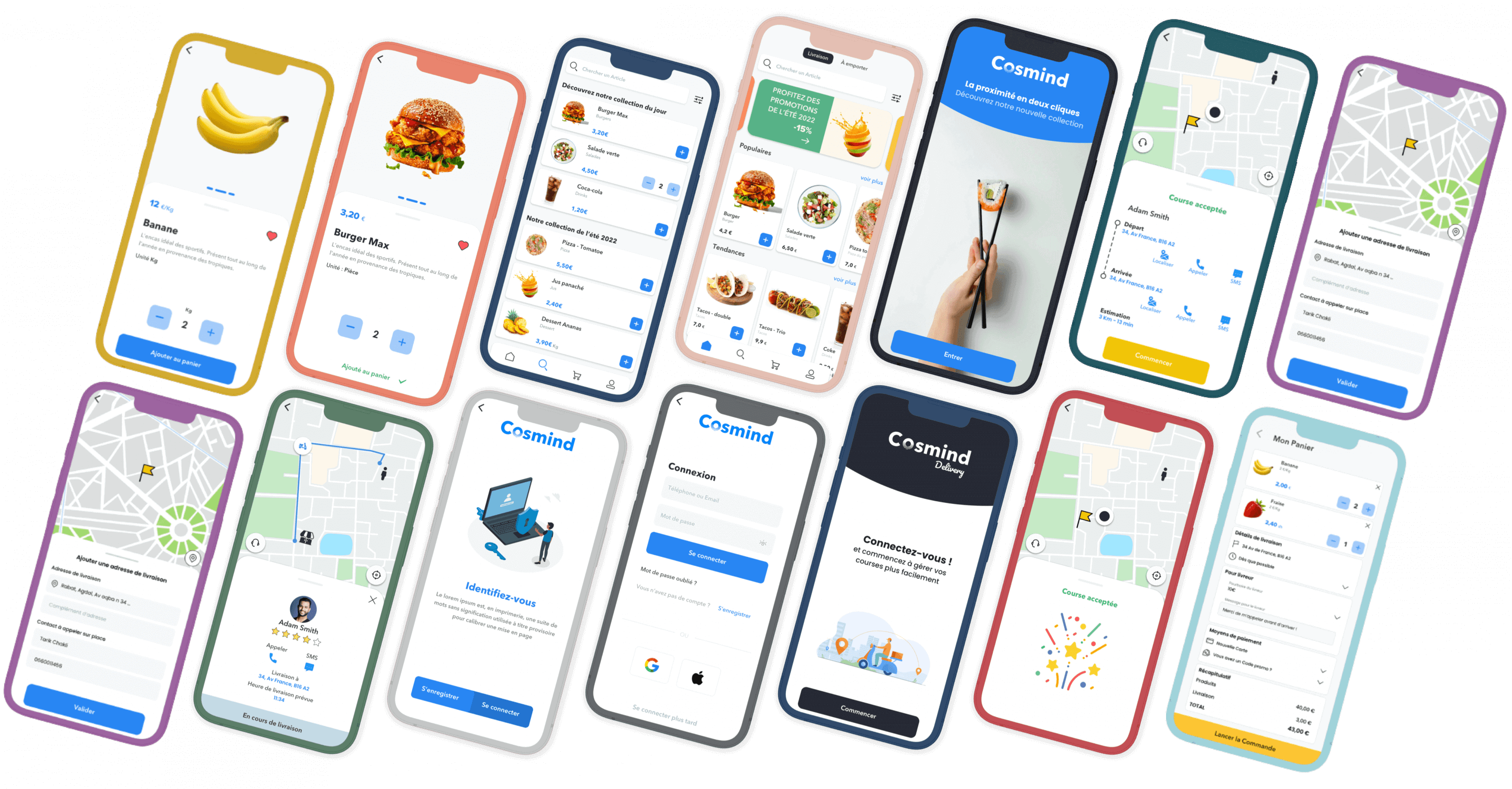
How to create an e-commerce Marketplace ?
Creating an e-commerce marketplace is an exciting entrepreneurial adventure that offers numerous opportunities for growth and profitability, but requires careful planning and a deep understanding of the market. However, there are several factors to consider in order to succeed in this highly competitive field, such as increased competition, associated costs, digital platform development, complexity of vendor management and delivery, etc.
Through this article, we will explore the key elements to launch your e-commerce marketplace successfully , the key steps to create an e-commerce marketplace, and how FlexiApps can help you create an e-commerce marketplace.
What is an E-commerce Marketplace?
An e-commerce marketplace is a platform that can include a website, mobile application on Android and iOS, an administrative space, and a delivery application. It allows third-party vendors to sell their products or services to customers online. Unlike a traditional online store, where the company sells its own products, an e-commerce marketplace offers a wider range of products from different vendors. Vendors can sign up on the marketplace and offer their products, while buyers can browse different offers and make purchases directly on the platform.
E-commerce marketplaces can be generalist, offering a wide range of products of different types, or specialized in a specific niche such as fashion, cosmetics, food, or electronics. E-commerce marketplace owners can also offer different business models, such as commission on sales, monthly subscription, payment on delivery, etc. The marketplace allows vendors to offer and list their products, while buyers can browse different offers and make purchases directly on the platform.
Why create an E-commerce Marketplace?
Creating an E-commerce Marketplace offers many advantages, including:
- Expanding the product offering: Creating an E-commerce Marketplace allows you to offer a wide variety of products to your customers, without having to manage the production or inventory of these products yourself. This can help you attract new customers and increase your revenue.
- Reducing costs: You don’t have to worry about production, inventory, and product delivery, as the sellers registered on your platform are responsible for these tasks. This allows you to reduce the production and management costs of your business.
- Increasing competitiveness: A good E-commerce Marketplace allows you to attract a large number of sellers. By expanding the product offering, you can become more competitive in the market. Customers can choose from a wider variety of products and benefit from more competitive prices.
- Reaching new customers: The sellers who sell on the Marketplace can have their own customer base, which allows you to reach new customers and retain them to your brand.
- Generating additional revenue: As the owner of the E-commerce Marketplace, you can charge a commission on the sales made by the sellers or a monthly subscription fee. This can help you generate additional revenue without having to invest in the production of products.
- Improving the customer experience: E-commerce Marketplaces offer a more convenient and transparent shopping experience for customers. Customers can browse a wide range of products, compare prices and features, and make purchases in just a few clicks.
However, creating an E-commerce Marketplace can be complex and require money, time, careful planning, and an effective marketing and management strategy to succeed, as well as a technological partner such as FlexiApps that can accompany you throughout your e-commerce marketplace creation.
How to create an e-commerce Marketplace
The creation of an e-commerce marketplace requires meticulous planning and a specialized IT development partner. Here are the steps you can follow to create an e-commerce marketplace:
- Identify your target market: Before launching your marketplace, it’s essential to determine the type of products you want to sell and the audience you want to reach. This will help you guide your product development.
- Study the competition: Before defining your goals, it’s crucial to study existing e-commerce marketplaces and analyze what they offer, what they do well, and what they could improve. This will help you create a competitive platform.
- Define your business model: There are different e-commerce marketplace models, such as the commission model or the subscription model. Define your business model and make sure it’s suitable for your target market.
- Find suppliers: You need to find vendors to power your e-commerce marketplace. You can search for them on social media, e-commerce sites, forums, or industry events.
- Develop your platform: You can develop your platform in-house or use an existing e-commerce marketplace platform. Make sure the platform offers basic features such as account management, security, payments, and feedback.
- Establish policies and rules: You need to establish rules for suppliers and customers, such as return policies, delivery policies, and terms of use. These rules will help protect customers and suppliers, as well as your business.
- Implement a marketing strategy: You need to promote your e-commerce marketplace to your target market. You can use social media, online ads, industry events, influencer marketing, and SEO to attract customers.
- Launch your e-commerce marketplace: Once you’ve developed your platform and found suppliers, you can launch your e-commerce marketplace. Make sure everything works correctly before launching, and continue to monitor platform performance to ensure everything is running smoothly.
You can create a successful e-commerce marketplace that provides a satisfying customer experience, generates revenue, and attracts new customers. Contact FlexiApps now for a detailed quote.
What are the essential features to have in your e-commerce marketplace
To create a successful marketplace, you can consider many features. Here are some that you must absolutely integrate:
- Search and filtering system: Your e-commerce marketplace must offer a robust search function to help customers quickly and easily find the products they are looking for.
- Shopping cart: Your e-commerce marketplace must include an easy-to-use and intuitive shopping cart that allows customers to add products and proceed to checkout.
- User account management: Your e-commerce marketplace must allow users to create and manage their user account, store their payment information, and track their orders.
- Payment management: Your e-commerce marketplace must offer secure, reliable, and convenient payment management for buyers and sellers.
- Comment management: Customers must be able to leave comments on products and sellers, and sellers must be able to respond to these comments.
- Order and delivery management: Buyers must be able to easily track the status of their order, and sellers must be able to manage deliveries and returns.
- Security management: Your e-commerce marketplace must be secure and protected against fraud, hacking, and malicious attacks.
- Marketing and promotion tools: Your e-commerce marketplace must offer marketing and promotion tools to help sellers promote their products and attract new customers.
- Customer support: Your e-commerce marketplace must offer efficient and fast customer support to help buyers and sellers resolve any issues that may arise.
- Rating and comment system: Buyers must be able to rate products and sellers, and leave comments to help other buyers make an informed purchasing decision.
- Real-time notifications: Buyers and sellers must receive real-time notifications for orders, payments, deliveries, etc.
In conclusion,
Creating an e-commerce marketplace requires a precise study and planning process and can be a complex task, but it represents enormous benefits for entrepreneurs and merchants wishing to move forward. By creating a well-designed e-commerce marketplace and following good development practices, you can have a solid, reliable, and profitable platform, attract loyal and satisfied customers, and generate significant revenues for yourself and for the sellers on your platform. Contact FlexiApps, the Marketplace creation agency, to create an e-commerce Marketplace.
clothing & Accessories Marketplace
Active agency since 2014
Let's build your clothing Marketplace !
Reactivity and customized support
Let's build your clothing Marketplace !
Active agency since 2014

Reactivity and customized support
What we offer

Mobile App
A mobile application is a key element to build a marketplace , as it allows users to access the platform at any time and from anywhere. At FlexiApps, we create for you a high-performance, user-friendly, secure, and feature-rich application.
Website
In order to build a marketplace a website is crucial , as it is the main point of contact between buyers and sellers. We create a website for you that offers clear information, easy navigation, and optimal security for online transactions.


Delivery App
A delivery application is an effective solution for delivery, enabling users to track their order in real-time and interact with the delivery person. It sets businesses apart from their competitors and enhances their value. FlexiApps will create for you a strong, reliable, and convenient delivery app.
Admin Panel
In order to build a marketplace , An admin panel s important for the daily management . We develop an admin panel that enables monitoring of transactions and management of users and products. It may include reporting tools, dashboards, and real-time notifications

What we offer
Mobile App

A mobile application is a key element to build a marketplace , as it allows users to access the platform at any time and from anywhere. At FlexiApps, we create for you a high-performance, user-friendly, secure, and feature-rich application.
Website

In order to build a marketplace a website is crucial , as it is the main point of contact between buyers and sellers. We create a website for you that offers clear information, easy navigation, and optimal security for online transactions.
Delivery App

A delivery application is an effective solution for delivery, enabling users to track their order in real-time and interact with the delivery person. It sets businesses apart from their competitors and enhances their value. FlexiApps will create for you a strong, reliable, and convenient delivery app.
Admin Panel

In order to build a marketplace , An admin panel s important for the daily management . We develop an admin panel that enables monitoring of transactions and management of users and products. It may include reporting tools, dashboards, and real-time notifications
Features

How to build clothes & accessories Marketplace ?
Online marketplaces have experienced exponential growth in recent years, and there has never been a better time to launch your own marketplace dedicated to a specific niche, such as clothing and accessories. Whether you are a fashion enthusiast or an entrepreneur looking for a new business opportunity, creating a marketplace can be an excellent way to generate online revenue. However, creating a marketplace for clothing and accessories requires careful planning and a deep understanding of the market. In this guide, we will review the various steps involved in creating a marketplace for clothing and accessories, including selecting your niche, finding suppliers, creating your platform, promoting your marketplace, and much more. Whether you are a novice in online business creation or already have experience, this guide will provide you with useful information to help you succeed
What is a marketplace for clothing and accessories?
A marketplace for clothing and accessories is an online platform that allows multiple sellers to offer their products to a wider audience. Clothing and accessory sellers can create their own online store on the marketplace and sell their own range of products. Buyers can browse the marketplace to find products from different sellers and make purchases from multiple sellers in a single transaction.
Marketplaces for clothing and accessories offer many benefits for both buyers and sellers. For buyers, they offer a wider choice of products from different sellers, often at competitive prices. For sellers, marketplaces provide an easily accessible platform to sell their products online, without having to create their own online sales site or manage their own marketing.
Marketplaces for clothing and accessories are becoming increasingly popular and are often used by clothing and accessory brands of all sizes, from large companies to small independent brands .
Why Create clothing & accessories marketplace ?
There are several reasons why creating a marketplace for clothing and accessories can be a good idea:
- By allowing multiple sellers to offer their products on your platform, you can offer customers a greater choice of products while generating additional revenue for your business. This variety of products can attract new customers who are looking for a specific product, while promoting competition among sellers to maintain competitive prices and better product quality. By using a marketplace, customers can make multiple purchases from different sellers in a single transaction, which offers a simplified and convenient shopping experience.
- Creating a marketplace can provide an online sales platform to independent sellers or small businesses that may not have the means or visibility to sell their products on their own website. This can help stimulate the local or national economy. By offering a variety of products from different sellers, the marketplace can attract customers with different budgets and varied style preferences. This can help retain customers by satisfying them with products they may not find elsewhere. Marketplaces can also offer advanced search functionality that allows customers to filter products by size, color, style, price, and other relevant criteria. This can help customers more easily find what they are looking for and make the shopping experience more enjoyable.
- As the owner of the marketplace, you can use purchase data and customer feedback to understand consumer trends and preferences, which can help adjust marketing strategy, improve products, and optimize the customer experience.”
How to create clothing & accessories marketplace ?
The creation of a marketplace for clothing and accessories may seem complex, but it can be simplified by following these general steps:
- Establish a business plan: This includes identifying your target audience, defining your products, pricing strategy, and planning your budget. You must also decide whether you will sell products from existing brands or create your own brand.
- Develop your Marketplace platform including a mobile application, website, delivery application, and admin panel that will allow you to manage vendors, products, and customers. If you want to create clothing & accessories marketplace You can contact FlexiApps for a detailed quote.
- Create a product list: Once you have chosen your platform, you can create a list of products that you will sell on your marketplace. This can include product descriptions, images, and prices.
- Find suppliers: If you do not create your own brand, you need to find suppliers for your products. You can find suppliers online or by working with existing brands.
- Set up payment and delivery systems: To allow buyers to order products on your marketplace, you must set up payment and delivery systems. This can include integrating payment gateways and setting up partnerships with delivery providers.
- Promote your marketplace: Once your marketplace is ready to launch, you need to promote your site to attract customers. This can include advertising campaigns, partnerships with bloggers and influencers, promotions, and discounts.
It is important to note that creating and managing a marketplace takes some time and effort. It is also important to ensure that you are in compliance with all local and national laws and regulations regarding online commerce.
What are the essential features to have in your clothing and accessories marketplace?
For a clothing and accessories delivery marketplace, it is important to have the following features:
- Advanced Search: an advanced search function that allows users to quickly find the items they are looking for using filters such as size, color, clothing type, brand, etc.
- Detailed Descriptions: detailed product descriptions that include high-resolution photos, information on size and material, care instructions, and customer reviews to help users make informed purchasing decisions.
- Shopping Cart: a shopping cart feature that allows users to add multiple items to their cart and purchase them all at once. Order Management: an order management system that allows users to track the status of their order, receive updates, and contact the seller if there are any issues.
- Secure Payment Options: secure payment options for users, including credit cards, PayPal, Apple Pay, Google Pay, etc.
- Fast Delivery: an option for fast delivery for users who want to receive their order quickly.
- Returns and Exchanges: a flexible return and exchange policy to allow users to return or exchange items if they are not satisfied with their purchase.
- Customer Support: responsive and friendly customer support to help users resolve any issues they may encounter while using the marketplace.
- Filters and Sorting: filters and sorting options to facilitate navigation in the marketplace, sorting by price, popularity, novelty, etc.
- Favorites: a feature to add items to a favorites list for easy retrieval later. User Profiles: user profiles to allow buyers and sellers to create accounts, manage their personal information, communication preferences, favorite lists, past orders, and purchase history.
- Delivery Options: varied delivery options to meet user needs, such as standard delivery, express delivery, same-day delivery, international delivery, or delivery to a pickup point.
- Rating and Comment System: a rating and comment system to allow buyers to give their opinion on the items they purchased, the sellers, and the purchasing experience. This creates a community of trust and helps future buyers make their choice.
- Marketing and Promotion: marketing and promotion tools to allow sellers to showcase their products, offer special deals, discount codes, or loyalty programs. This can also include email marketing tools, targeted advertising, or social media.
- Data Security: enhanced security to protect users’ personal and financial data, using advanced security protocols, fraud prevention measures, and robust authentication controls.
In summary, a clothing and accessories delivery marketplace must offer a smooth, transparent, and secure user experience, while allowing buyers and sellers to communicate easily and transact with confidence, if you wish to create clothing & accessories marketplace contact FlexiApps .
To conclude,
The creation of a marketplace for clothing and accessories requires careful planning, efficient execution, and a long-term commitment to customer satisfaction. It is important to understand the needs of your potential sellers and buyers, to develop an easy-to-use platform, and to implement security policies to protect customer data. Finally, remember that the success of a marketplace depends on the quality of products and services offered by sellers, as well as the quality of the shopping experience for customers. By following these steps, you can create a marketplace for clothing and accessories
grocery marketplace
Active agency since 2014
Build your Grocery Delivery Marketplace in Hours !
Reactivity and customized support
Build your Grocery Delivery Marketplace in Hours !
Active agency since 2014

Reactivity and customized support
Features

How to build Grocery Marketplace ?
The creation of a marketplace for grocery stores may seem like a complex undertaking, but it can also be a lucrative opportunity for entrepreneurs in the food industry. A grocery store marketplace allows buyers to purchase food products online from multiple sellers, providing them with a wider and more convenient selection. This can be particularly attractive to consumers who wish to avoid traveling to a physical store and seek to purchase all their grocery products on the same online platform. In this guide, we will examine the key steps for creating a grocery store marketplace, including practical advice and examples of best practices to help you succeed in your business
What is a grocery store marketplace?
A grocery store marketplace is an online platform where buyers can purchase food products from different sellers in one place. Unlike traditional e-commerce sites that are usually online shops run by a single company, a grocery store marketplace brings together multiple sellers on one platform.
Sellers can be small producers, local farmers, independent grocers, emerging food businesses, or even large established food brands. Buyers can access a wide variety of food products, including fresh fruits and vegetables, meat, fish, dairy products, baked goods, organic products, and many more.
The grocery store marketplace acts as an intermediary between buyers and sellers, offering a user-friendly e-commerce platform for both parties. Sellers can sell their products on the platform, and buyers can purchase directly from them, or from multiple sellers in one order. Transactions are processed online, and orders are usually delivered directly to the customer’s door.
Why create a grocery store marketplace
- Offer a wide selection of products: A grocery store marketplace allows for a large variety of food products from different sellers, which can help to attract a wide audience and meet the needs of different customers.
- Encourage sales: Sellers can benefit from the visibility offered by the grocery store marketplace, which can help to attract new customers and increase sales.
- Reduce costs: By using a grocery store marketplace, sellers can share platform-related costs such as marketing, advertising, and platform development fees, which can reduce overall costs and allow them to offer competitive prices.
- Create a community: By bringing together multiple sellers on one platform, a grocery store marketplace can create a community of like-minded sellers interested in producing and selling quality food.
- Respond to online demand: The demand for online grocery shopping has increased in recent years, which can represent an opportunity for entrepreneurs looking to meet this demand by creating a grocery store marketplace.”
How to build a grocery delivery marketplace?
Creating a delivery marketplace for grocery stores may seem like a complex endeavor, but by following these key steps, you can build a grocery marketplace :
- Needs assessment: Before creating a delivery marketplace for grocery stores, it’s important to assess customers’ needs and determine what is currently lacking in the market. Additionally, you will need to determine if you want to offer grocery products of all types or if you will focus on a specific type of product.
- Platform structure planning: You must decide how you want to structure the platform and determine the necessary features. The platform should be user-friendly, easy to use for both sellers and buyers, and include secure payment options and an order management system.
- Seller recruitment: You will need to recruit sellers for your delivery marketplace for grocery stores. You can contact producers, local farmers, independent grocery stores, emerging food businesses, or even well-established food brands. It’s important to offer incentives to encourage sellers to join your platform.
- Setting up the delivery system: You will need to establish a delivery system to deliver customer orders. You can create your own delivery service, or you can use existing delivery partners. It’s important to ensure that delivery is fast, reliable, and that food is stored and delivered correctly.
- Marketing and promotion: You will need to promote your delivery marketplace for grocery stores to attract customers and sellers. You can use online marketing, social media, word-of-mouth, advertising, promotional offers, and events to attract customers and sellers.
- Platform launch: After completing the previous steps, you can launch your online platform to begin selling grocery products. You will need to closely monitor sales and customer feedback to determine the next steps for improving the platform.
In summary, creating a delivery marketplace for grocery stores can be a complex endeavor, but with careful planning, effective seller recruitment, good delivery organization, and appropriate promotion, you can create a successful online platform.
Home delivery or takeout for grocery delivery marketplaces
A grocery delivery marketplace can offer several delivery options to its customers, including home delivery or pick-up. Both options have their advantages and disadvantages, and the decision will depend on several factors, including:
Customer preferences: Some customers prefer home delivery because it saves them time and effort, while others prefer pick-up because it allows them to personally retrieve their order and control the delivery process.
The nature of food products: Some food products are more sensitive than others and require home delivery to preserve their quality, while other products are more robust and can be easily picked up in person.
Delivery logistics: Costs and logistical requirements vary depending on the chosen delivery method. Home delivery can be more expensive and requires close coordination between sellers and delivery partners, while pick-up can be easier to manage.
Competition: If other grocery delivery marketplaces offer home delivery, it may be necessary to offer this option to remain competitive.
Ultimately, it is important for the grocery delivery marketplace to offer delivery options that meet the needs and preferences of customers, while taking into account logistical and competitive factors. It may be helpful to conduct market research and customer surveys to determine the most popular and in-demand delivery options.
To conclud
Creating a grocery delivery marketplace can be a complex undertaking, but with careful planning, effective vendor and delivery management, and appropriate promotion, you can build a successful online platform. It’s important to offer quality products and cater to customers’ needs and preferences by providing appropriate delivery options. Whether you choose home delivery or takeout will depend on several factors, including customer preferences, the nature of the food products, logistics of delivery, and competition. Ultimately, the key to success is to listen to customer needs and adapt your grocery delivery marketplace accordingly to offer the best user experience.
How to build Food delivery Marketplace ?
Active agency since 2014
Build your Food Delivery Marketplace in Hours !
Reactivity and customized support
Build your Food Delivery Marketplace in Hours !
Active agency since 2014

Reactivity and customized support
Features

How to build Food delivery Marketplace ?
Building a food delivery marketplace is a great way to provide customers with the convenience of ordering food from their favorite restaurants and having it delivered to their doorstep. This type of platform allows customers to easily discover new food options and try different cuisines, while also supporting local businesses. The development of a food delivery marketplace involves several steps, including research, design and development, vendor recruitment, delivery network and logistics, marketing, and ongoing maintenance and updates. In this guide, we will explore the different steps involved in building a successful food delivery marketplace and provide tips on how to make it stand out in a crowded market.
What is an Online Food Marketplace?
An online food marketplace is a platform that connects customers with food vendors and restaurants. The marketplace allows customers to browse, order and purchase food items online, and also get them delivered to their homes or pick up in-store. The platform serves as a one-stop-shop for customers to find and order food from different restaurants and vendors, and also offers a variety of food options and cuisines. Some examples of popular online food marketplaces are Grubhub, Uber Eats, DoorDash, and Postmates.
Why build a food delivery Marketplace ?
- Increased reach: An online food marketplace allows customers to access a wider variety of food options from different restaurants and vendors. This can help to attract a larger customer base and increase sales.
- Convenience: An online food marketplace provides customers with the convenience of ordering food from their favorite restaurants and having it delivered to their doorstep. This eliminates the need for customers to leave their homes or workplaces to purchase food, making it a convenient option for busy individuals or those who are unable to leave their homes.
- Cost-effective: Building an online food marketplace can be a cost-effective way to reach customers, as it eliminates the need for a physical storefront. This can help to lower overhead costs for restaurants and vendors.
- Scalability: An online food marketplace can be scaled up or down depending on demand. This allows for easy expansion into new markets and increased sales potential.
- Safety: Online food marketplaces have played a vital role in providing safe and contactless food delivery options, which helped in reducing the spread of the virus and keeping people safe.
- Support local businesses: Online food marketplaces provide a platform for small and local restaurants to reach a larger customer base, which can help them to increase their sales and grow their business.
- Better customer service: Online food marketplaces can improve customer service, by providing customers with the ability to track their orders in real-time and access to customer service teams that can assist them with any issues they may have with their orders.
- Data collection and analytics: Online food marketplaces can collect data on customer preferences and purchase history, which can be used to improve the platform and target marketing efforts.
Overall, an online food marketplace can provide a cost-effective, convenient, and safe way for customers to access a variety of food options while supporting local businesses, and also can provide valuable data to improve the platform and target marketing efforts.
How to build a Food Delivery Marketplace?
Creating an online food marketplace involves several steps:
- Research: Conduct market research to understand the needs and preferences of your target audience. This information can be used to inform the design and features of your platform. Research the competition and identify opportunities to differentiate your platform.
- Customizing and integration : to build a food delivery marketplace use a Food delivery Marketplace software such as Cosmind to Get a features-rich, Ready-to-use & Customized Food Marketplace Platform that includes a customizable Client Mobile App + Web site + Delivery Mobile App + Admin panel . Or Contact Flexiapps to Design a user-friendly and easy-to-navigate website & app that includes features such as product listings, search functionality, and secure payment options.
- Vendor recruitment: Begin recruiting vendors and food producers to list their products on your marketplace. Establish clear guidelines and terms of service to ensure a high-quality shopping experience for customers.
- Delivery network and logistics: Establish a delivery network and logistics, you can either do it by your own or partner with delivery companies. Make sure to have real-time tracking of orders and deliveries, and also have a customer service team to assist customers with their orders and deliveries.
- Marketing: Market your food marketplace to reach potential customers. This can include social media campaigns, email marketing, and PR efforts. Continuously gather feedback from customers and vendors to improve the platform and make it the best it can be.
- Maintenance and updates: Continuously monitor and maintain the platform, make sure the security is up to date, and fix any bugs or glitches that may arise. Keep updating the platform with new features and improvements.
- Legal considerations: Make sure you are aware of any legal requirements, such as food safety regulations, insurance, taxes, and permits that may be required to operate your online food marketplace.
Throughout the development process, it’s important to work closely with a team of developers, designers, and marketers to ensure that the platform is functional, user-friendly, and attractive to customers. Additionally, it is important to have a clear business model in place, and consider the cost of creating and maintaining the platform. It’s also a good idea to have a budget for marketing and advertising to drive traffic to the platform.
What Features to include in your Food delivery Marketplace ?
When creating a food delivery marketplace, there are several key features that should be included to provide a seamless and enjoyable experience for customers:
- User-friendly interface: Make sure that the platform is easy to navigate and understand. The interface should be visually pleasing and intuitive, with clear categories and search functionality to help customers find what they are looking for.
- Secure payment options: Offer a variety of secure payment options such as credit card, debit card, and online payment methods. This will make it easy for customers to pay for their orders and ensure that their personal information is protected.
- Order tracking: Provide customers with real-time order tracking so they can follow their order from the restaurant to their doorstep. This can include notifications on the status of their order, estimated delivery times, and tracking details.
- Customer reviews and ratings: Allow customers to leave reviews and ratings for restaurants and vendors to help others make informed decisions about which establishments to order from.
- Filter and search options: Allow customers to filter their search by cuisine, price, rating, location, and more. This can help them find the perfect meal and restaurant for their needs.
- Multi-language support: In case your marketplace is targeted for a specific region, it is a good idea to have multi-language support to make it more accessible for people from different backgrounds.
- In-app messaging: Allow customers to communicate with vendors and restaurants through the app, for example, if they have any special requests or questions.
- Customizable menus: Allow vendors to customize their menus and make changes to their offerings based on seasonality and availability.
- Promotions and deals: Offer promotions and deals to attract customers and encourage repeat business.
- Mobile app: Having a mobile app is a must-have, as it will make it easier for customers to order from their smartphones and keep track of their orders.
Overall, including these features in your food delivery marketplace will provide a convenient and enjoyable experience for customers, which can help to increase customer satisfaction and drive repeat business , Contact us to explore our food delivery marketplace solution Cosmind .
Takeaway & Delivery in Your Food Marketplace Platform
A food marketplace platform that offers both takeout and delivery options can provide customers with a wider range of options and more flexibility. Here are some ways to incorporate takeout and delivery into your food marketplace platform:
- Integration with restaurant POS systems: Integrate your platform with restaurant point-of-sale (POS) systems to facilitate seamless ordering and payment for both takeout and delivery.
- In-app ordering and payment: Allow customers to place takeout orders and make payments directly through the app or website.
- Delivery network: Establish a delivery network that can handle both takeout and delivery orders. This can include working with third-party delivery companies or building your own delivery fleet.
- Real-time tracking: Provide customers with real-time tracking of their takeout and delivery orders, so they can see exactly when their food will be ready or delivered.
- Delivery options: Offer different delivery options, such as curbside pickup, contactless delivery, and in-store pickup.
- In-app messaging: Allow customers to communicate with vendors and restaurants through the app, for example, if they have any special requests or questions or to ask for the status of the takeout orders.
- Pick-up time slots: Allow customers to choose their preferred pick-up time slots for takeout orders, and also to have the option to schedule delivery in advance.
- Multiple pickup location: Allow customers to pick up their takeout orders from multiple locations, such as restaurant, drop-off points, or food trucks.
- Self-pickup: Allow customers to pick up their takeout orders themselves by providing a self-pickup option.
Incorporating takeout and delivery options into your food marketplace platform can provide customers with more convenience and flexibility, which can help to increase customer satisfaction and drive repeat business.
In conclusion,
building an online food delivery marketplace is a great way to connect customers with local restaurants and vendors, and make it easier for them to order food online. To build a food delivery marketplace , it is essential to consider the following steps:
Develop a clear business plan and conduct market research to understand the needs of your target audience.
Choose the right food delivery marketplace Platform such as Cosmind , Or Contact our Agency our team of expert will help you identify your needs & the right features for your business .
Establish a delivery network and offer different delivery options, such as curbside pickup, contactless delivery, and in-store pickup.
Make sure to have a mobile app for your marketplace to increase accessibility for customers.
By following these steps and including the necessary features, you can create an online food delivery marketplace that is convenient and enjoyable for customers, which can help to increase customer satisfaction and drive repeat business.
Everything You Need to know about headless E-commerce: Structure, Working & Benefits
Active agency since 2014
Headless e-commerce platforms development Agency
Reactivity and customized support
Headless e-commerce platforms development Agency
Active agency since 2014

Reactivity and customized support
Everything You Need to know about headless E-commerce: Structure, Working & Benefits
The Covid-19 pandemic has forced individuals, entrepreneurs, and companies to look closely at their business operations. People who run e-commerce understand the significance of their stores’ stability, safety, and performance.
Many brands and companies have recorded an increase in online sales due to the closure of the traditional brick-&-mortar stores. However, increasing online traffic has caused businesses to understand that the current monolithic structure/architecture is insufficient to expand and scale their business operations.
Headless e-commerce platforms and solutions can improve your online store’s management and provide your existing and prospective customers with excellent shopping experiences. Today’s article will discuss headless e-commerce, its structure and architecture, and its benefits. Read on!
What is Headless E-Commerce?
Headless is a cutting-edge technology that separates the backend from the frontend. Backend refers to the entire technical background for the application’s operations. A frontend is everything people see on your e-commerce store .
Headless e-commerce enables better service optimization, adjusts the store based on the users’ expectations, and allows businesses to experiment on the front end without tampering with the backend.
A conventional online store model has three elements: a database, backend, and frontend. A database allows storing product information, including descriptions, names, photos, videos, content, etc.
The Backend layer processes information from the store’s database and collaborates with the content management system (CMS) to manage the store. The Frontend layer is the visible part of the store and the primary point of contact for the end-users, such as the shop’s customers.
Unlike the traditional online store model, the headless model separates the head (frontend) and makes it work independently of the database and backend. In simple words, the frontend communicates via APIs.
Many businesses and brands used websites to promote their digital presence until recently. However, having a user-friendly and responsive website is not enough to optimize their operations.
Companies need to provide consistently reliable user experiences across all digital channels by focusing on innovative technologies, such as artificial intelligence (AI), live chat support, Internet of Things (IoT) devices, etc.
Many touchpoints force businesses to take a broader view of technology services offered and developers to look for innovative solutions based on headless e- commerce technologies.
Headless Structure & Architecture
Headless e-commerce offers an easy-to-use structure and architecture, separating the frontend and backend components. The decoupling of frontend and backend solutions transforms the monolithic structure into two different layers connected through APIs. Three headless architecture types and solutions are:
1. API-drivenCMS
A headless content management system (CMS), commonly known as API-driven CMS, is a backend framework to manage your CMS needs. It offers data structure services to manage your data accurately and reliably. You can integrate an API- driven CMS with the current system by making API calls to the CMS.
An API-driven CMS is an ideal solution for individuals and businesses planning to create a content-rich website. It is a perfect option if you want to leverage the power of soft-sell marketing strategies. Likewise, you can choose this option if you have a functional CMS-based website and want to add e-commerce components.
The core features of API-driven CMS or headless CMS are built-in SEO tools, digital asset management, content templates customized to your needs, and publishing content on multiple channels.
We provide an innovative headless e-commerce platform with all-inclusive solutions to streamline your e-commerce operations, increase sales, and improve your business’s bottom line.
2. API-DrivenEcommercePlatform
E-commerce APIs are an excellent way to transfer data from one software application to another and use the information in a single or centralized UI. You can integrate APIs with numerous solutions and take advantage of your existing system’s functionality without building a website or features from scratch.
An API-driven e-commerce platform is a form of headless architecture and an ideal option for individuals and businesses looking to bring more flexibility to UI design. You can leverage the pre-built e-commerce functionality using this headless architecture. Thus, it prevents you from spending money on backend development.
Standard e-commerce features offered by API-driven headless e-commerce platforms are online product cataloging, pricing management, content management and optimization, payment capabilities, order management, and sales analysis.
3. Microservices
Microservices refers to a headless and decoupled e-commerce architecture, allowing businesses to choose and swap technology providers based on their specific needs. For instance, you can select a microservice for one particular business function without changing the entire system.
Searching for products, reviewing shopping carts, and adding promotional codes or coupons are touchpoints that streamline a customer’s online sales journey. Microservices separate these touchpoints and treat them independently.
The purpose is to decouple each functionality tool and connect them via APIs. So, this headless architecture allows businesses to become agile, make quick changes, and add new features to the system with minimal disruptions.
For instance, you can test and introduce UI and UX updates for a single touchpoint using the microservice architecture without disrupting the others. You can also develop new functions in parallel.
Therefore, a headless e-commerce microservices architecture allows you to evolve your website with new functionality and updates based on your needs. At the same time, your existing website remains stable and operational.
Benefits of Headless E-Commerce
Headless e-commerce platform combines simplicity, reliability, and convenience of using the latest and innovative technologies. For instance, a progressive web app combines the best of browser and application use, improving your online store’s operations and the shopping experience of end-users. Let us discuss a few practical benefits of headless e-commerce.
Improved Performance and Security
Our headless e-commerce platform can improve the performance and security of your business. A headless platform ensures fewer updates and queries to the database without involving the backend.
So, it enhances the overall operation of your e-commerce store and increases conversions. Using a headless e-commerce platform reduces the number of potential vulnerabilities and threats in the service through which hackers and cybercriminals can hack into the system.
Multiple views with one backend
Another benefit of using a headless architecture is to leverage multiple views with a single backend and streamline your business operations. For instance, you can adjust the store’s view to various devices.
Using an API that connects the frontend to the backend, you can create a separate appearance for your e-commerce store, software, smartphone application, and point-of-sale (POS) system.
Design Flexibility
A headless e-commerce platform equips frontend developers with essential resources and innovative frameworks to create unique, responsive, visually appealing user interfaces with different page layouts, business widgets, and custom catalog implementation. For example, business widgets may include:
- A Product builder
- A booking form
- A cost calculatorUnlike a monolithic e-commerce platform, a headless design and implementation increase flexibility and reliability. At the same time, the implementation cost of a headless e-commerce design is lower than the heavy customization of a monolithic platform. Agile Marketing one thing that distinguishes a headless e-commerce platform from traditional systems is that it can support new and emerging technologies, allowing businesses to provide their customers with optimal and personalized experiences.In addition, this benefits your marketing team, enabling them to roll out multiple websites across different businesses, brands, portfolios, and divisions. A headless e-commerce platform offers flexibility, equipping developers and marketing teams to collaborate and set up a new website within a few days instead of months.Headless E-Commerce in a NutshellYou can update the system in headless e-commerce, such as adapting it to your new smartphone requirements without destabilizing the entire platform. So, this makes your store more reliable, faster, securer, and better suits your customers.
The good news is that you can make such updates more frequently without involving the entire team in deploying and implementing changes. When you update the frontend layer, it won’t affect the backend or order processing.
Besides, you can experiment with your store’s user interface and make it more appealing without slowing it down. Because an efficient, stable, and fast e- commerce store is a must, headless e-commerce can help you achieve your goals.
For instance, you can leverage the power of headless e-commerce during sales peaks, such as Cyber Monday, Black Friday, and promotional campaigns. It can handle a massive number of orders without affecting the backend system. Thus, you can prevent overloading the backend and optimize your business operations.
Final Words
Conventional e-commerce platforms follow a monolithic approach and focus on front and backend integration. It requires a middle layer to handle and manage communication between the backend and frontend.
However, the closed link between these layers prevents individuals and businesses from adopting/customizing the platform to various customers’ needs. Bear in mind that headless requires a team of experienced and skilled professionals to implement the solution.
The cost of headless implementation soars every passing day, making it challenging for small and medium-sized businesses to achieve their goals.
However, you can use our all-inclusive headless e-commerce platform to get the job done efficiently, reliably, and quickly. Contact FlexiApps today for more information!
Food delivery Apps: Trends of 2022!
Active agency since 2014
Mobile & Web Apps development Agency
Reactivity and customized support
Mobile & Web Apps development Agency
Active agency since 2014

Reactivity and customized support
Food delivery Apps: Trends of 2022!
Food Delivery Apps are all the rage right now globally in the year 2022 as evidenced by the popularity of UberEats, DoorDash, PandaExpress, and GrubHub in the US and Canada. In Europe, there’s Just Eat, Deliveroo, and Foodpanda (also popular in Southern Asia).
Our agency specializes in creating food delivery apps. Our team of experts will develop your food delivery app as per your requirements while ensuring peak app performance and excellent after sales services such as app maintenance and updates. Please contact our sales team for further information.
Food delivery has seen excellent growth globally over the past few years. Thanks to technology and the rise of smartphone apps and their usage, customers have benefited enormously and this presents a huge business potential for the food service industry comprising of restaurants, food delivery startups & established food delivery companies.
In addition to technology, a very big contributor that accelerated the use of food delivery apps was the COVID-19 pandemic throughout 2020 and the early part of 2021. People needed to eat but were in quarantine due to strict lock downs around the world. So, naturally we started using food delivery apps to have our food come to us, thus driving the growth of food delivery services.
This growth is backed up by data as well. According to Bringg.com, a company offering cloud based food delivery logistics solutions, research done by Morgan Stanley (an American Bank) estimated growth of sales from online food delivery will be as high as US$220 Billion by the year 2023. Deutsche Bank is estimating that the online grocery space which is worth US$24 Billion will surge to US$120 Billion by 2025.
Going forward, what is driving this growth aside from the obvious factors of technology and the post pandemic boom? The answer lies in the trends or patterns that have emerged in the recent years.
Let us now have a look at the upcoming trends for the year 2022 that are key factors behind the tremendous growth of food delivery apps. These are;
- Tech Giants coming into the Food Delivery Market
- Increased Restaurant Deliveries
- Delivery of Online Groceries
- Alternate Delivery Methods such as Robots or Drones
- Virtual/Ghost Kitchens
- Contactless Delivery
- Food Delivery Management Software
- Rise in Food Delivery Subscriptions
Hop in and let’s have a look at each of these! 1. Tech Giants coming into the Food Delivery Market
Back in 2017, the e-Commerce juggernaut Amazon purchased WholeFoods which is a multinational supermarket chain offering organic food items. Ubereats had previously launched in 2014, which is a online food delivery platform by the popular ride sharing company Uber. Google has also integrated food delivery services into its search, maps and Google Assistant since 2019.
The fact that tech giants are approaching and investing into food delivery services speaks volumes about the growth of this industry, and rightly so. The beauty here is that these giants may create more commercial opportunities for small vendors that may be able to use their services as well driving revenue and growth of the overall food delivery niche.
2. Increased Restaurant Delivery
Given the revenue potential and from the heat of competition by the rise of food delivery services and apps, restaurants are ramping up their delivery game. Major restaurant chains are now using their own delivery services or using third party food delivery management services and software to keep up with the competition to avoid loosing out on revenue.
In the US, Chick-Fil-A began deliveries in 2019. Another popular US Chain, Panera Bread, started doing their deliveries in 2016. Established fast food players such as McDonalds, KFC and Dominos already have brilliant delivery services.
3. Delivery of Online Groceries
The COVID-19 pandemic fueled the growth of this trend. Logically, looking back and as stated, we couldn’t go out to buy our groceries because of strict lock downs. So, naturally we started getting our groceries online and that has stuck since. It’s a simple way to get your daily groceries since you don’t need to get into your car, drive to a store, take time to buy your groceries, then bring them home and then cook them! Sounds very cumbersome, doesn’t it?
Wholefoods, now owned by Amazon, is such an online groceries provider for many markets in the developed world. It is more than obvious to see why the use of online groceries shopping has exploded.
4. Alternate Delivery Methods such as Robots or Drones
Tech giants and food giants alike are using new and emerging technologies to streamline the delivery experience to ensure that food gets to the customer in time.
Amazon and Dominos Pizza have started to use drones for deliveries. Drones can fly faster at around 80 Km/h carrying a payload of 5Kg over a distance of 5Km as used by Zomato, a food distribution firm.
DoorDash uses robots to literally deliver foods to your door – the robot carrying your food remains locked during transit time so that your food stays secure. When it arrives, it sends you a text message and the food chamber unlocks, and you can then approach the robot and retrieve your food. (Upperinc.com)
The idea behind using these technologies is to cut delivery time since traditional methods like delivering food by car takes longer due to distance, speed and traffic limitations.
5. Virtual/Ghost/Cloud Kitchens
These are kitchens that are fully operational with a complete staff of chefs but they exist solely for food delivery services. That is, there is no dining area and you can’t visit them for a meal. They receive orders, prepare meals and pack them for deliveries, that’s it! All you need is a kitchen premises and some trained staff and you’re good to go!
The benefits of using these kitchens are obviously much lower operational costs and higher profits in the long run.
A European startup, Keatz, produces food for Ubereats and Deliveroo. Kitchen United provides meal for deliveries across 4 states in the USA. Both these companies have raised millions in startup funding. Ready to eat dishes in lesser time is the main driving force here. (Spdload.com)
6. Contactless Delivery
Remember how COVID-19 taught us to maintain a distance of at least six feet to avoid infections? A further guideline was to avoid touching such as no handshakes, no hugging, and not even touching our own faces.
So, naturally when it came to food, even though the food was well packaged, some people chose to have food left out on their doorsteps when it arrived, that is, the delivery process became completely contactless. The delivery app/service would simply notify the customer that their food has arrived and they’d pick it up.
Some people still prefer it this way and food delivery services have kept this option for the wary customer. GrubHub, Ubereats and Foodpanda have maintained this.
7. Food Delivery Management Software
With the rise of food delivery apps and services, and to help scale these to larger levels such as very large populations, software to manage and monitor food delivery services has also seen a rise.
Companies such as Shipox, provide data driven food delivery services such as automation of the delivery process.
McDonald’s spent US$300 Million to acquire a big data firm in 2019 in order to measure, analyze delivery data, and improve their performance just so that they could stay ahead of their competition. (Bringg.com)
In short, using food delivery management software can help your startup or big company to efficiently streamline the entire food delivery process and gain feedback/insights to improve future performance.
8. Rise in Food Delivery Subscriptions
One word can describe this factor, Millennials. The Millennial Generation (people born in between 1980s and 2000s) prefer more of a fresh approach when it comes to food and are more inclined to staying in and having a personal dining experience rather than taking the time to go out. This trend has also been observed by the alcohol industry as Millenials prefer more of a craft beer as opposed to something readily available to the masses.
Online ordering and food deliveries are a perfect match for such users. Food companies now provide fresh pre-packaged food in a box containing raw or semi-raw ingredients for, say, an entire recipe. All the consumer has to do is order the box, and then proceed to open it and enjoy preparing their meals.
The idea here is that this saves the customer a lot of time as opposed to going out and buying all the ingredients separately & individually. According to the US Food Information Council, 55% of Millennials prioritize convenience over taste. Adding to this trend is the rise of more health aware consumers that give preference to vegan, organic, gluten-free and ethically sourced foods. (Bringg.com)
Conclusion – Food Delivery Apps: Trends of 2022
The rest of the coming year 2022 seems like a very exciting time for the Food Delivery App Industry. Future insights are showing a very bright, positive and progressive period where growth should be guaranteed for this niche since the trends in this article are providing a handsome outlook.
The main challenges will lie with increasing customer demand, complex logistical challenges, geographic and consumer preferences, and ensuring timely, transparent delivery.
Which food delivery app have you used recently to satisfy your food cravings? Do you have a favorite food delivery app? Let us know in the comments section.



